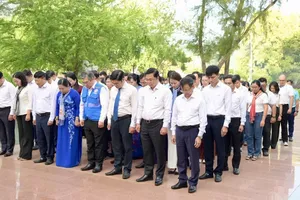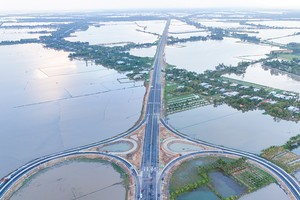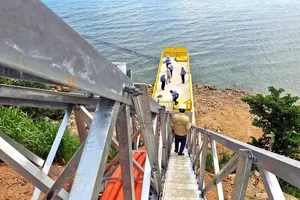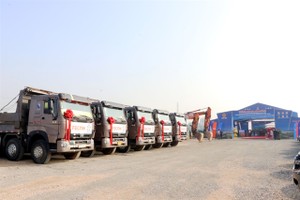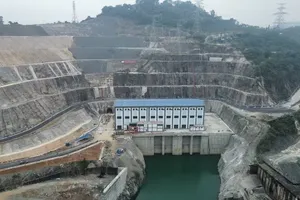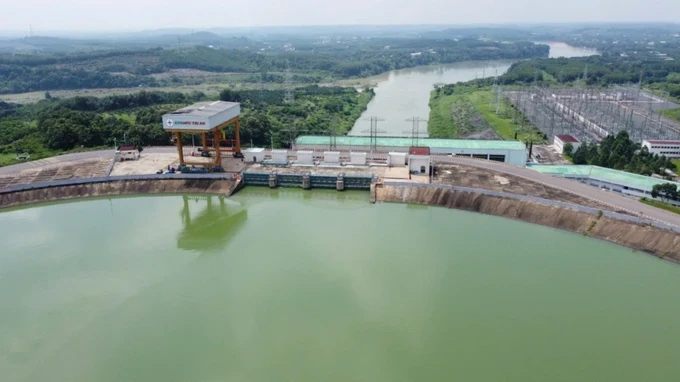
On September 23, Tri An Hydropower Co. (member of Vietnam Electricity Group) reported that as of 12:00 p.m. on the same day, the upstream water level of the reservoir was 60.78m; the downstream water level at the plant was 4.7m; and the inflow into the reservoir was 1700m3/s.
To ensure flood storage capacity, combined with the fact that the water level at Bien Hoa Hydropower Plant had passed the peak tide and was decreasing, and to avoid rapid, sudden discharge of water, affecting downstream areas, the company increased the amount of water discharged through the spillway to regulate the reservoir as follows:
- 9:00 a.m. on September 24: the discharge through the spillway was 320m3/s; the water flow through the turbines was from 800 m3/s – 850 m3/s; and the total discharge downstream was from 1,120 m3/s – 1,330 m3/s.
- 11:00 a.m. on September 24: the total discharge was 1,280 m3/s.
Depending on weather conditions and downstream water levels at Bien Hoa Station, the company may adjust the discharge through the spillway.
On the same day, Southern Irrigation Exploitation One Member Co. Ltd. (Ministry of Agriculture and Rural Development) also reported that the water level of Dau Tieng Lake at 7:00 a.m. on September 23 was at an elevation of 22.76m, with an inflow of about 200 m3/s, which is 0.99m higher than the lowest pre-flood water level (21.77m) and 0.89m lower than the highest pre-flood water level (23.65m).
The company announced the discharge of water from Dau Tieng Lake in the first phase of 2024 as follows:
- 7:00 a.m. on September 24 to 7:00 a.m. on October 1: the discharge rate will be 100 m3/s, with a total discharge of 60.48 million m3.
Depending on the meteorological and hydrological conditions in the basin, the fluctuations of the lake's water surface, and the tidal fluctuations in the downstream of the Saigon River, the company will adjust the discharge time and flow rate to suit the actual situation.
It is forecast that low-lying areas along the Dong Nai River, La Nga River, in Tan Phu and Dinh Quan districts of Dong Nai Province, as well as Tanh Linh and Duc Linh districts of Binh Thuan Province are at risk of flooding. Low-lying areas along the downstream of the Dong Nai River in Bien Hoa City, Vinh Cuu, Long Thanh, and Nhon Trach districts are also affected.
Vice Chairman Pham Van Nam of the Ma Da Commune People's Committee (Vinh Cuu District) said that the locality continuously informs people about the situation of rain, floods, and landslides to proactively respond and prevent damage. The commune also advises people to implement drainage measures, reinforce the protection of aquaculture ponds, and harvest crops that are ready for harvest.
In Xuan Bac Commune (Xuan Loc District, Dong Nai Province), about 20 households living by fishing on the La Nga River are being informed and encouraged by the locality to evacuate to a safe location due to the risk of rising floodwaters.
Bac Tan Uyen District, part of Tan Uyen City (Binh Duong Province), and Thu Duc City (Ho Chi Minh City) are also at risk of flooding.






